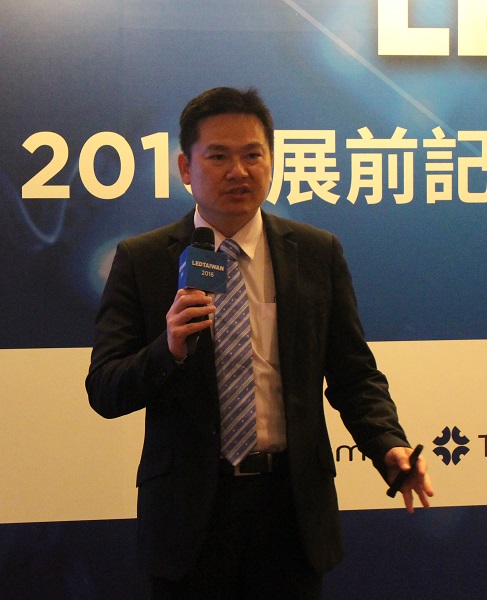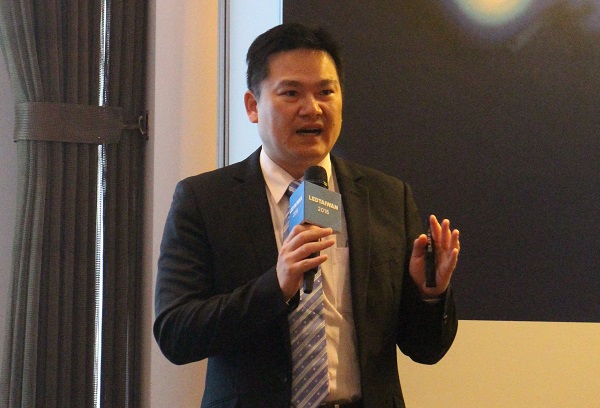(Author: Judy Lin, Chief Editor, LEDinside)
The sapphire industry has never been the same since Apple dropped sapphire screens in iPhone 6 in 2014, followed with the bankruptcy of GTAT in October the same year. Things have been rough and hard for the sapphire industry over the last three years, as it enters a restructure phase, said Jerry Chen, General Manager, Taiwan, Monocrystal during a press conference held by Semiconductor Equipment and Materials International (SEMI) at Taipei World Trade Center Club, Taiwan on Tuesday.
Things were not always so bleak for the sapphire industry. Supply shortages in 2009 caused sapphire prices to triple from $8 per 1 mm to $26, but the accelerated growth and lucrative market was short lived, said Chen. The sapphire market attracted a swarm of competitors that quickly led to a glut situation in 2012. The oversupply situation in 2015 is expected to persist in 2016, he added.
These developments causing lowered retail prices, and declining gross margin for most companies. Market conditions has been really tough for the industry. “Most companies in the sapphire industry have been losing money over the last three years,” said Chen. Manufacturers in the sapphire industry have seen gross margin decline range from 20% to 300%.
Top Asian sapphire makers from Japan and Korea have even shut down, or closed international business operations, he added. Three out of the top 12 sapphire crystal growers have left the market. “The industry is entering a restructure phase,” observed Chen.
 |
|
Jerry Chen, General Manager, Taiwan, Monocrystal. (LEDinside) |
While the restructure will hurt less market competitive companies, Monocrystal has benefited from the industry restructure as it absorbs clients from competitors that have withdrawn from the market. “Our market share in the sapphire industry reached 20% to 30% in 2015, and we expect it to exceed 30% in 2016,” said Chen.
Low retail prices are still a huge challenge for the Russian sapphire maker that aims to expand production capacity from 4 million units in 2015 to 5 million units in 2016. The top sapphire maker based in Russia witnessed 4-inch sapphire ingot prices skydive 50% to below US $8 in 2016 compared to the same period last year when the same product was selling above US$ 10 per piece, said Chen. Prices of 2-inch sapphire ingots is at even lower rates of around US $2.
However, Chen noticed certain developments in the sapphire industry could cushion the blunt blow from the underperforming 2-inch sapphire ingot market. “Most manufacturers in the LED industry have upgraded to 4-inch sapphire wafers…I think it is highly unlikely for 2-inch sapphire ingots to fall below US $1,” said Chen. “I think price falls in the sapphire industry will ease this year to less than 20%.”
LED applications make up about 60% of Monocrystal’s business, 30% is lens and optics, while the remaining is confidential information, said Chen.
Asked about his outlook for the smartphone application market, Chen was rather conservative: “The smartphone industry has entered a bottleneck, so Monocrystal’s outlook for the smartphone application market in 2016 is very conservative…We expect our revenue from smartphone applications to remain flat this year.” And this is only the company outlook for sapphire home buttons and camera lenses in smartphones.
 |
|
Jerry Chen, General Manager, Taiwan, Monocrystal. (LEDinside) |
According to the sapphire specialist, sapphire screened phones will not hit the markets in 2016 as a mass consumer product. “It is still very costly to make sapphire screened phones compared to Corning Gorilla Glass covers because of yield rate issues and material costs,” said Chen. “I think you might see it in top two high end Apple phone models in the future, but probably not this year.”
Wearable devices also have relatively small market volume at the moment making it even challenging for sapphire manufacturers, it is hoped though 6-inch wafer production will catch on in end market applications to help turn around the situation for struggling sapphire companies.
The sapphire industry has entered a restructure phase, where only market competitive companies and those capable of delivering high quality products will survive. Similar to LED industry outlook the sapphire industry will need to develop new market applications, hopefully wearable devices and virtual reality head gear can be a start. In the end it all really boils on whether there are demands from new end market applications.













